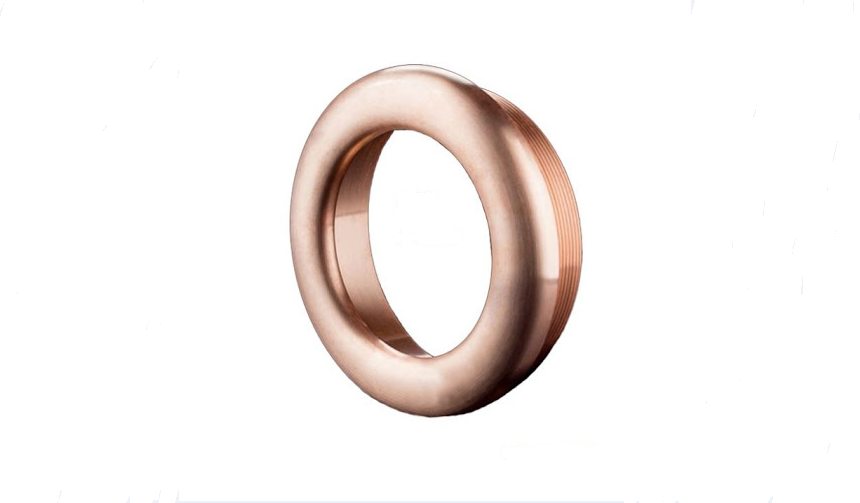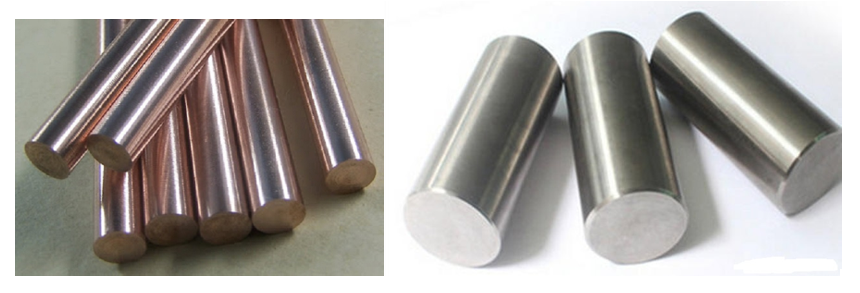Tungsten Copper Alloy vs Tungsten Nickel Iron Alloy

Tungsten Copper Alloy vs Tungsten Nickel Iron Alloy
Tungsten-copper alloy, like tungsten-nickel-iron alloy, is a high-density tungsten alloy. But tungsten copper alloy vs tungsten nickel iron alloy, what's the difference between them? If you looking for the answer to this question, then you've come to the right place. In this article, we will take a look at the differences between tungsten copper alloy and tungsten nickel iron alloy.

Tungsten Copper Alloy vs Tungsten Nickel Iron Alloy
Both tungsten-copper alloy and tungsten-nickel-iron alloy have the characteristics of high density, high strength, small thermal expansion coefficient, good high-temperature resistance, and radiation shielding effect. However, due to the difference in binder phase alloys and production processes, they have many differences in terms of performance.
1. Tungsten Copper Alloy
Tungsten copper alloy, also known as W-Cu alloy, or tungsten copper in English, is an alloy based on tungsten and adding copper (the content of 6% to 45%). In addition to the characteristics of tungsten, it also has the characteristics of copper.
The superior electrical and thermal conductivity of metallic copper gives W-Cu alloy excellent electrochemical performance and heat dissipation. It is suitable for use in high-voltage switches, electrical machining electrodes, and microelectronic packaging materials.
It is worth noting that the melting point of tungsten (3410°C) and copper (1080°C) is quite different. When the temperature is above 3000°C, the copper in the alloy will be liquefied and evaporated, absorbing a large amount of heat, thereby reducing the surface temperature of the material. Therefore, people call this alloy a metal sweating material, which is suitable for use in aerospace and aviation as missiles, rocket engine nozzles, gas rudders, air rudders, nose cones, etc.
Common production methods for tungsten copper alloys include powder metallurgy, injection molding, copper oxide powder method, and tungsten frame infiltration method.
2. Tungsten Nickel Iron Alloy
Tungsten-nickel-iron alloy, also known as W-Ni-Fe alloy, is an alloy based on tungsten (about 90-98%) and adding nickel, iron, and copper components. Note: The appropriate ratio of nickel to iron is 7:3 or 1:1. Although it does not have the good electrical and thermal conductivity of copper, it has better tensile strength and ductility than W-Cu alloy.
W-Ni-Fe alloy is suitable for counterweights, radiation shielding devices, military equipment, and electrical products. The common production method of this alloy is powder metallurgy.
Conclusion
Thank you for reading our article and we hope it can help you have a better understanding of the differences between tungsten copper alloy and tungsten nickel iron alloy. If you want to learn more about tungsten alloys, we would like to advise you to visit Advanced Refractory Metals (ARM) for more information.
Headquartered in Lake Forest, California, USA, Advanced Refractory Metals (ARM) is a leading manufacturer & supplier of refractory metals & alloys across the world. It provides customers with high-quality refractory metals & alloys such as tungsten, molybdenum, tantalum, rhenium, titanium, and zirconium at a very competitive price.
{{item.content}}
LEVE A REPLY
{{item.children[0].content}}
{{item.content}}






